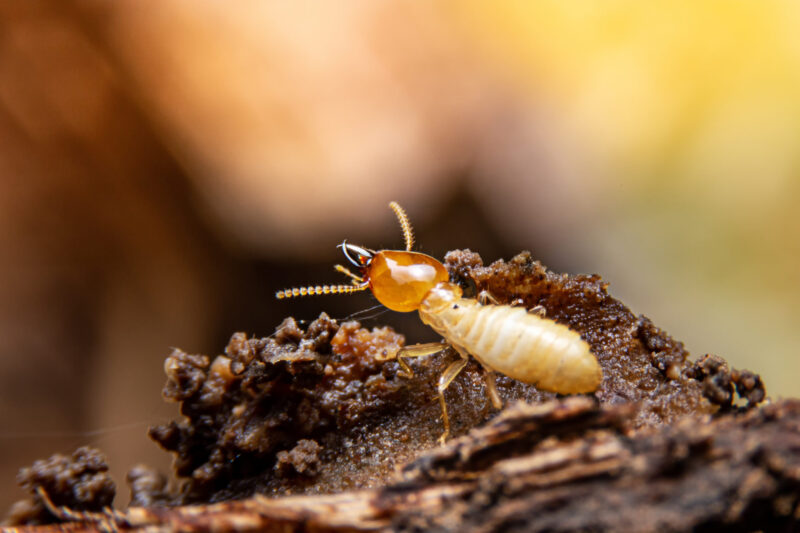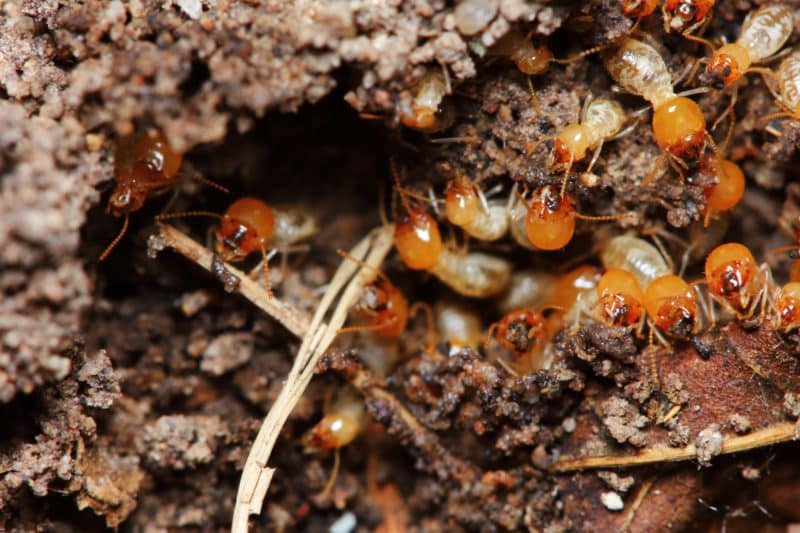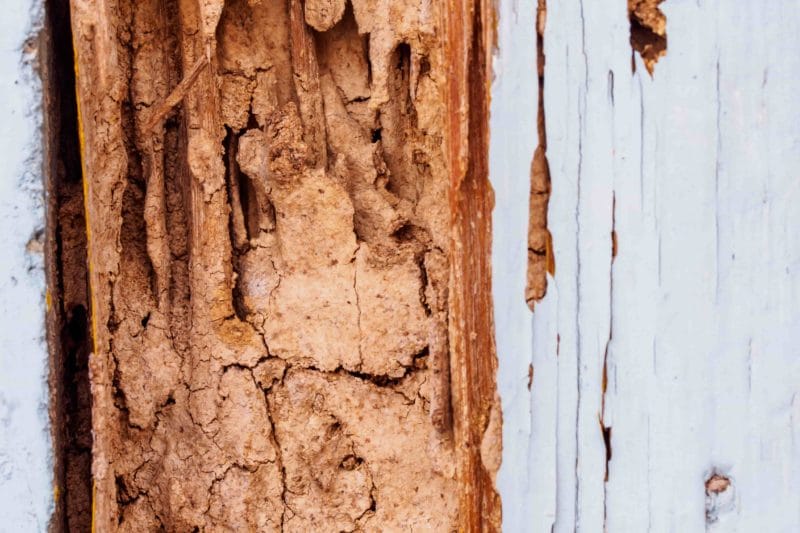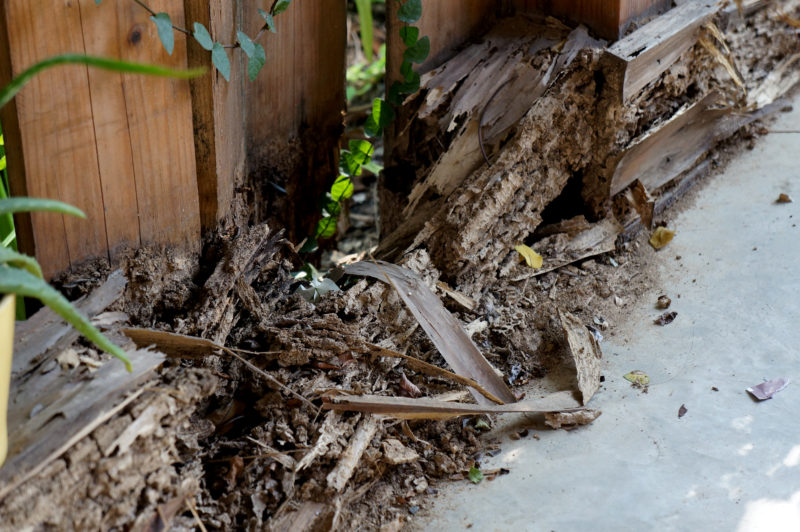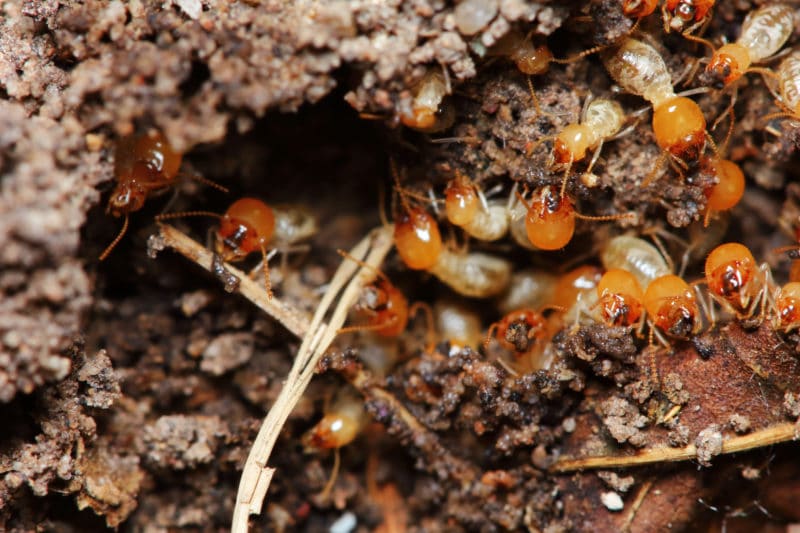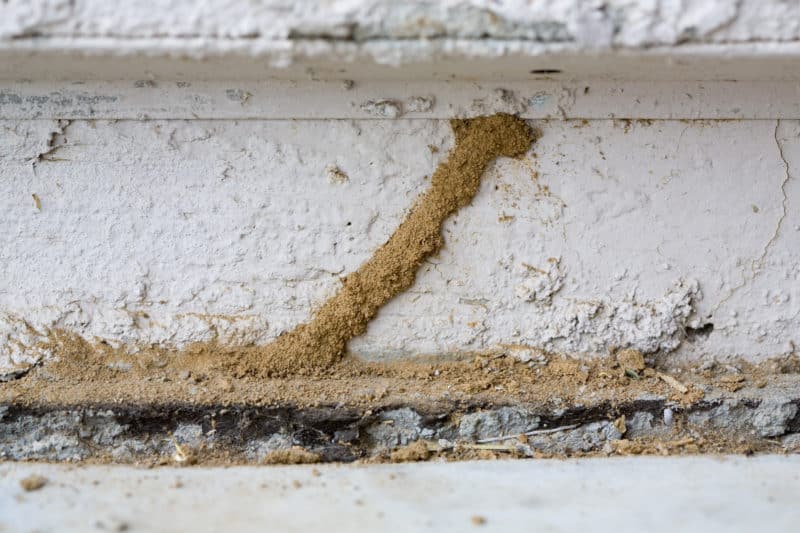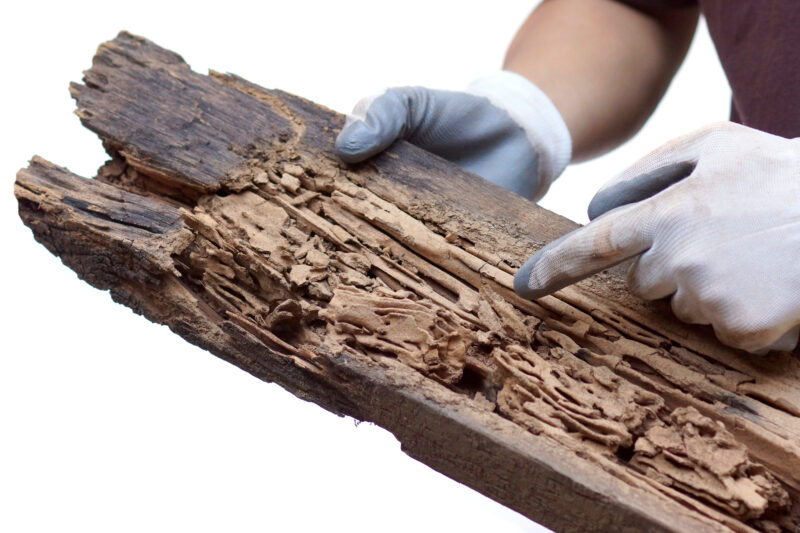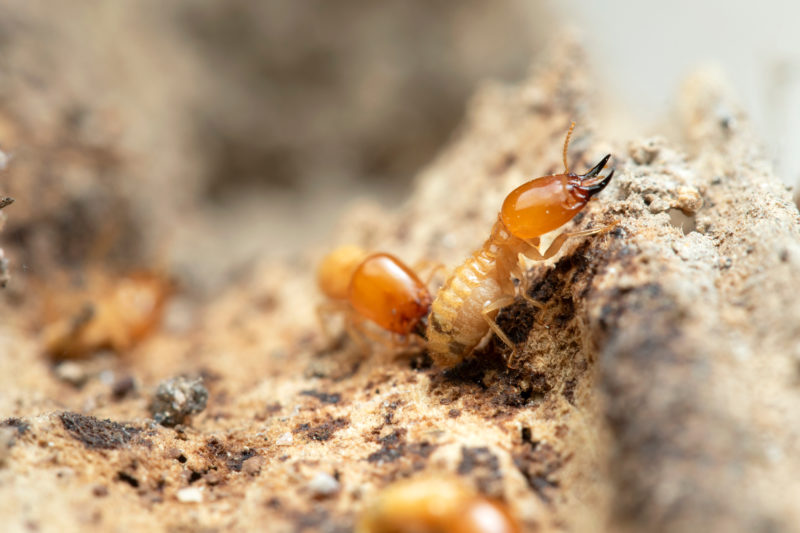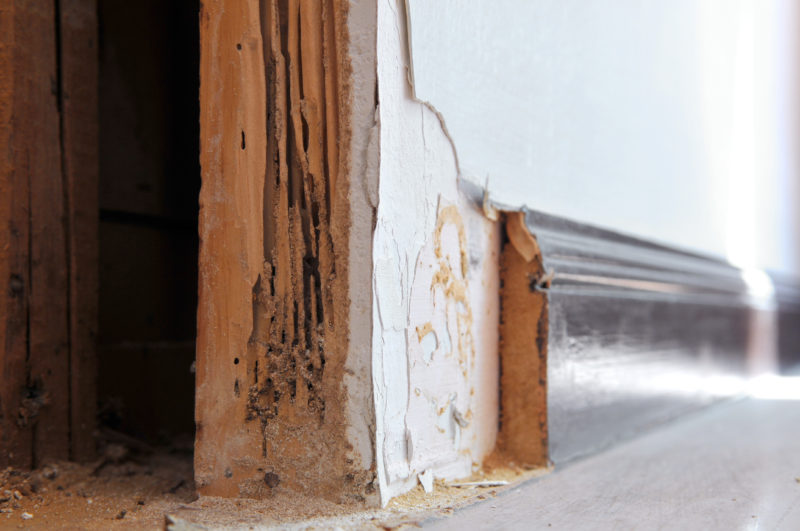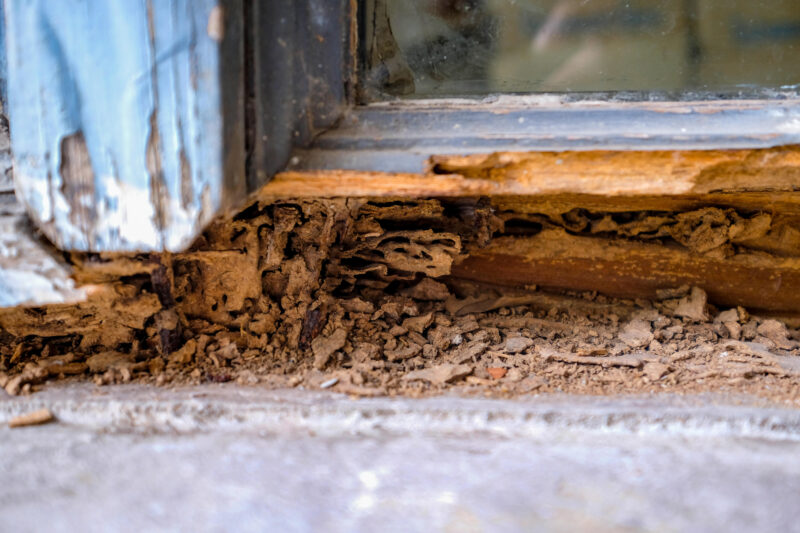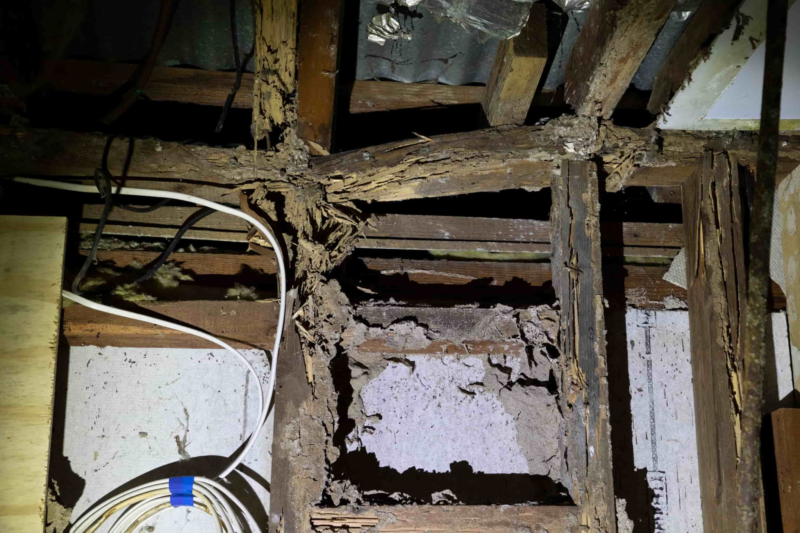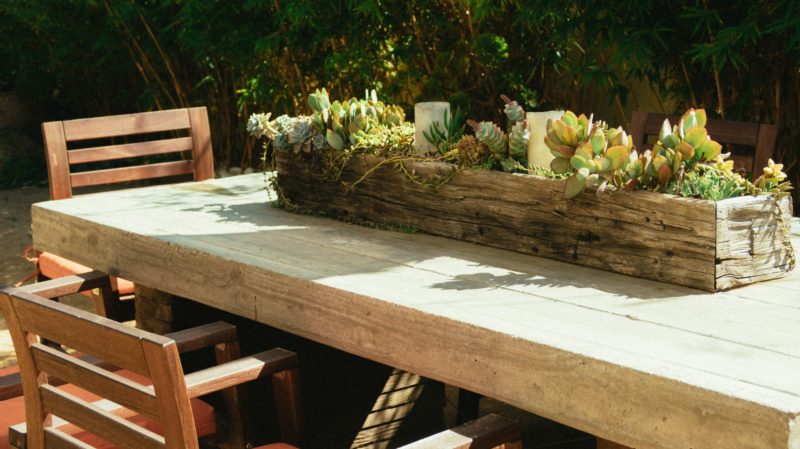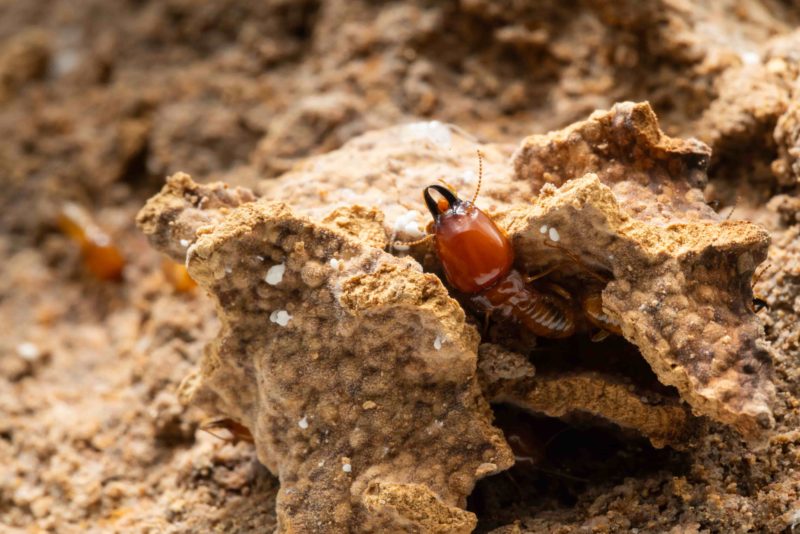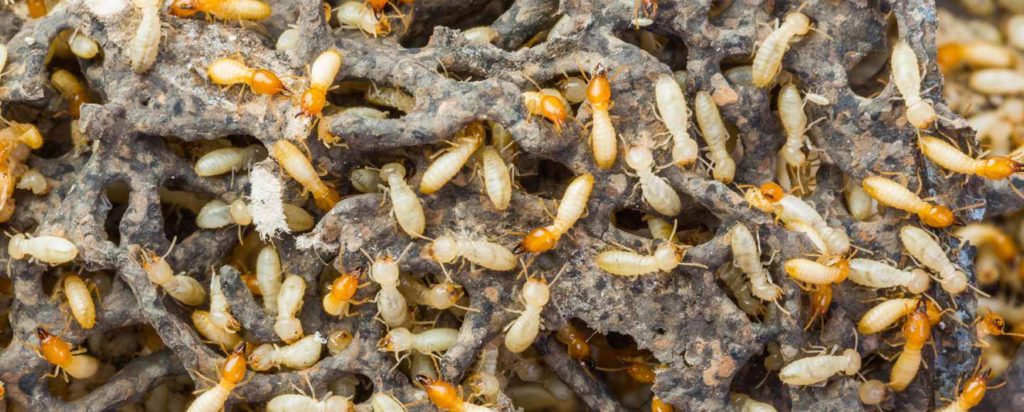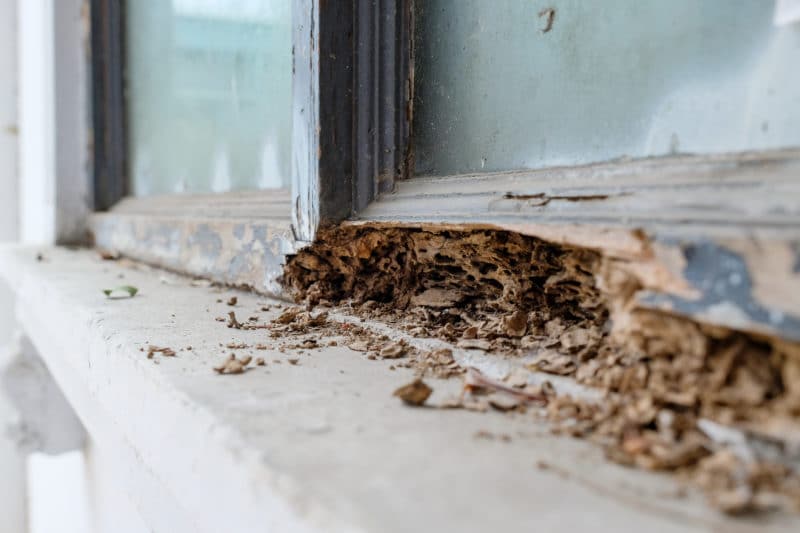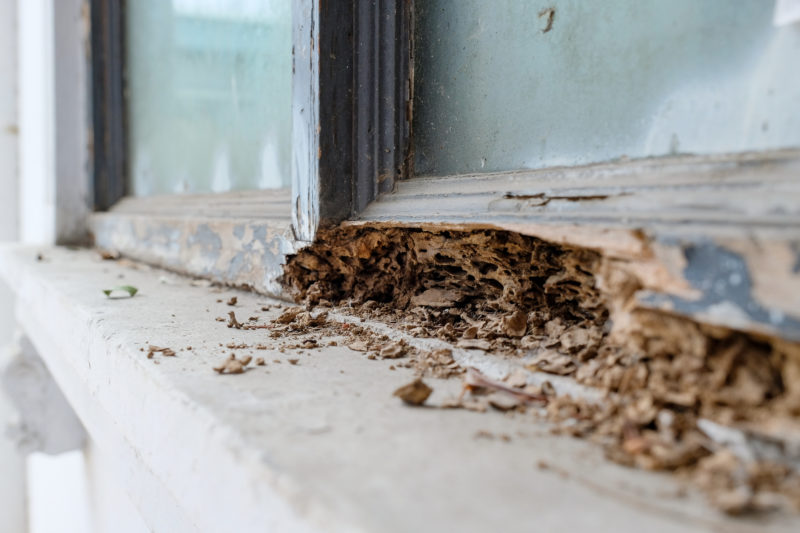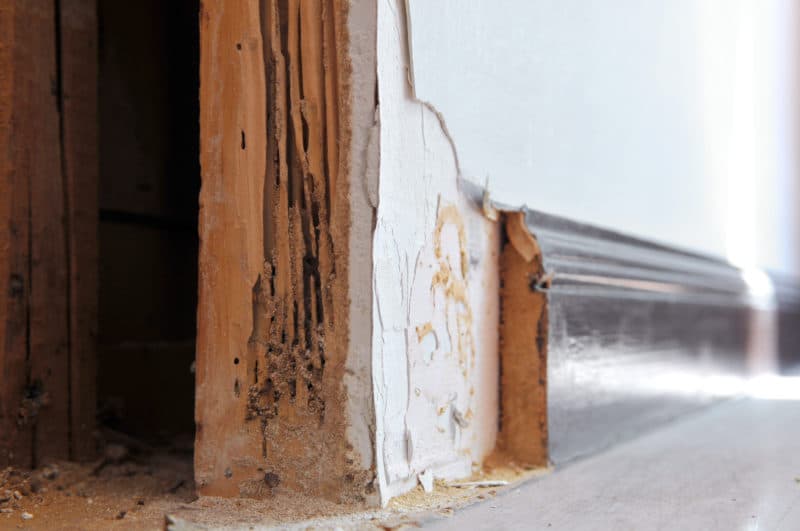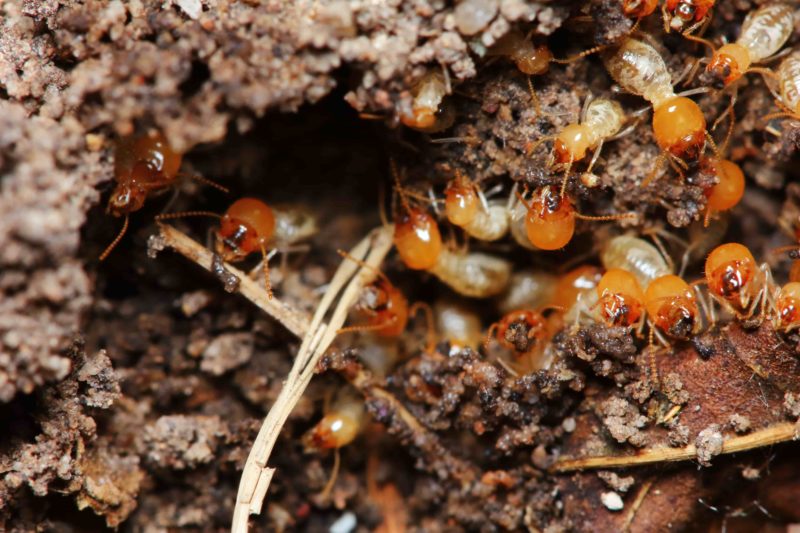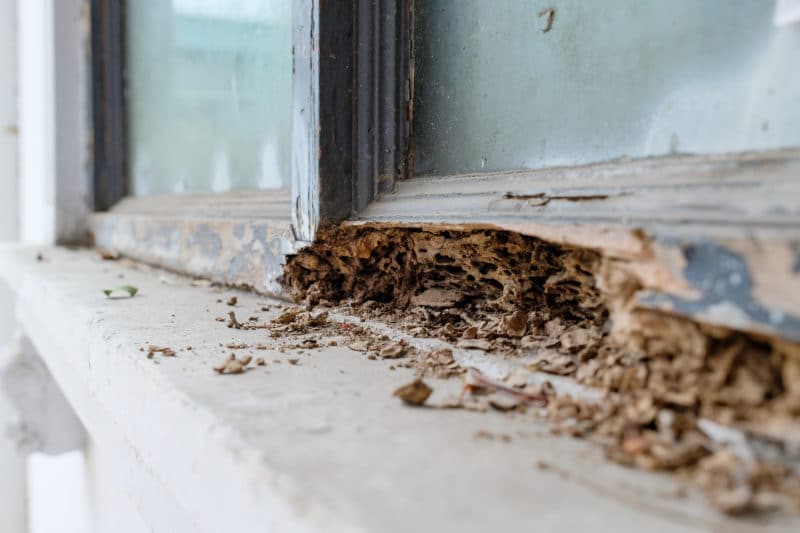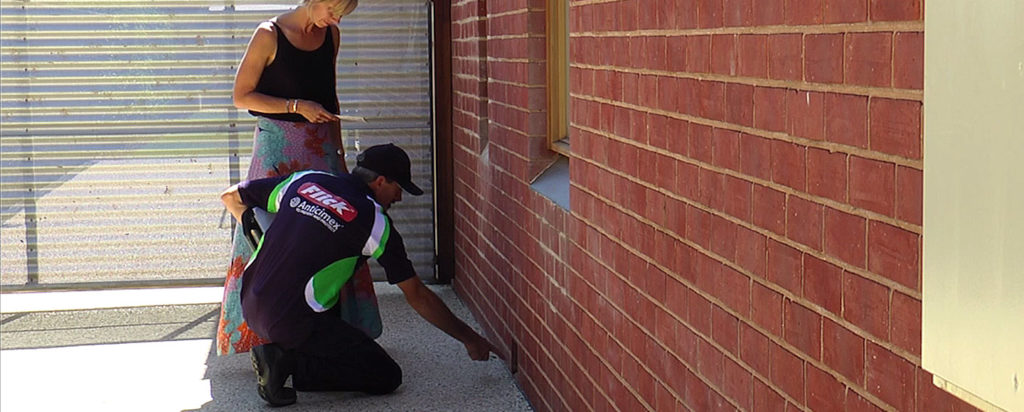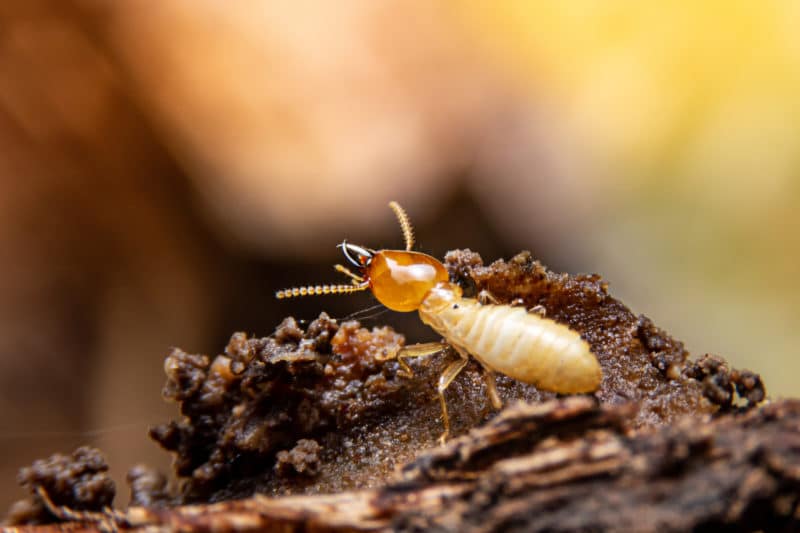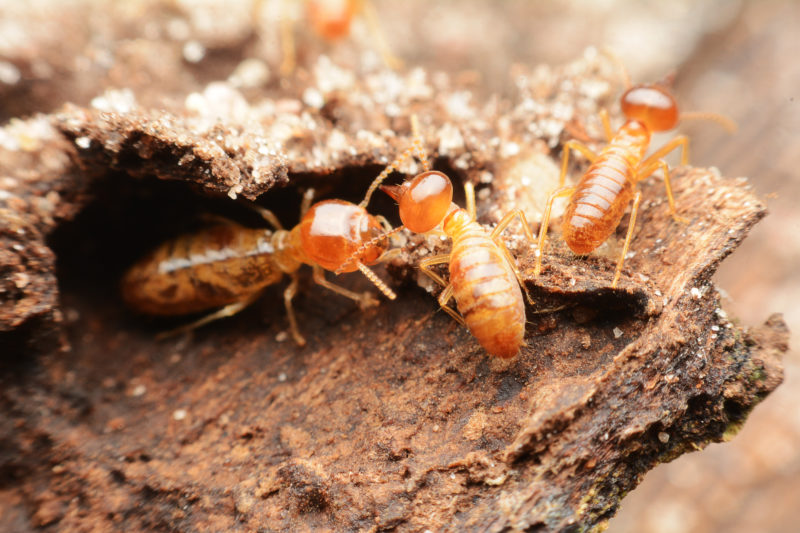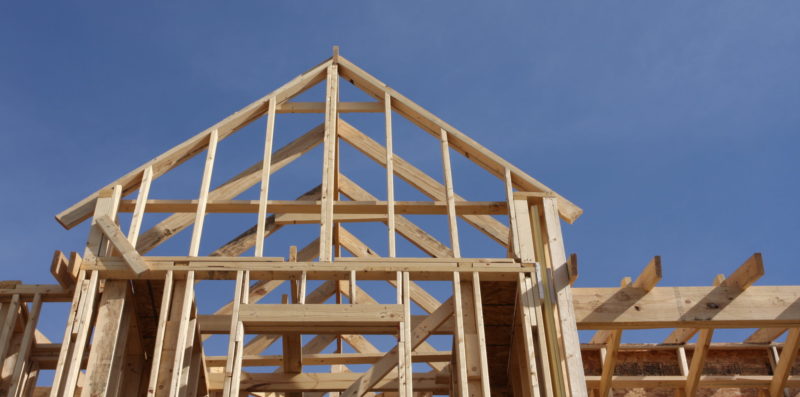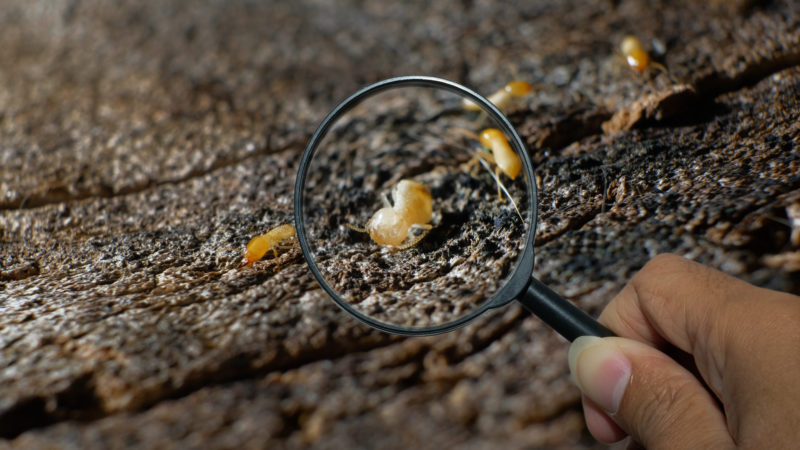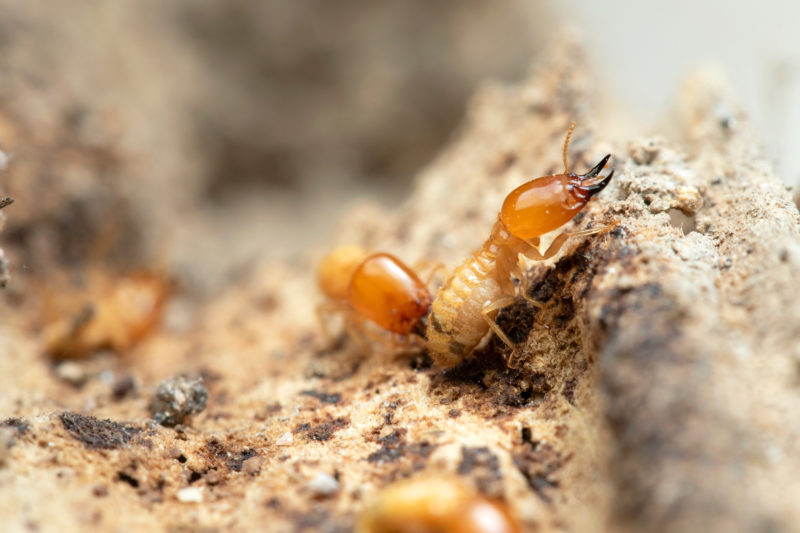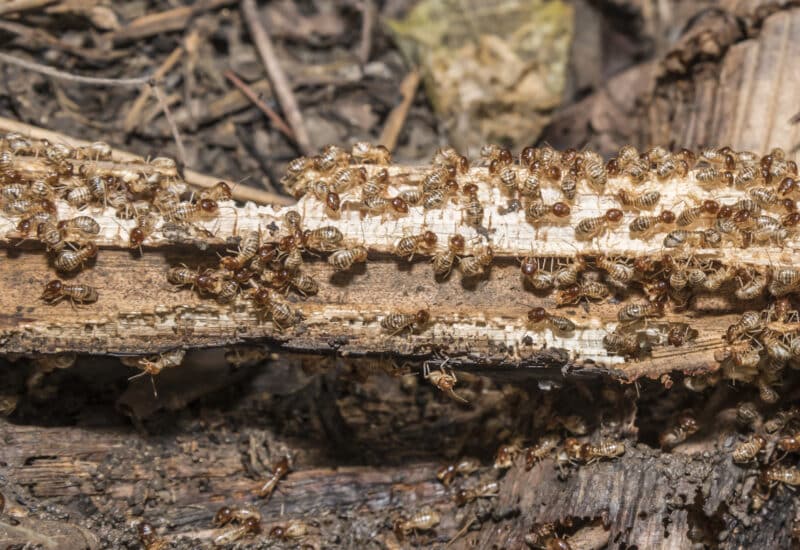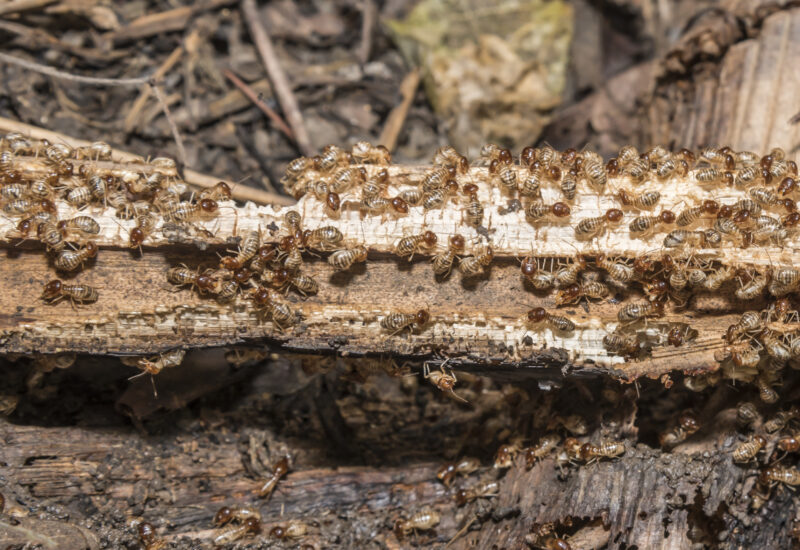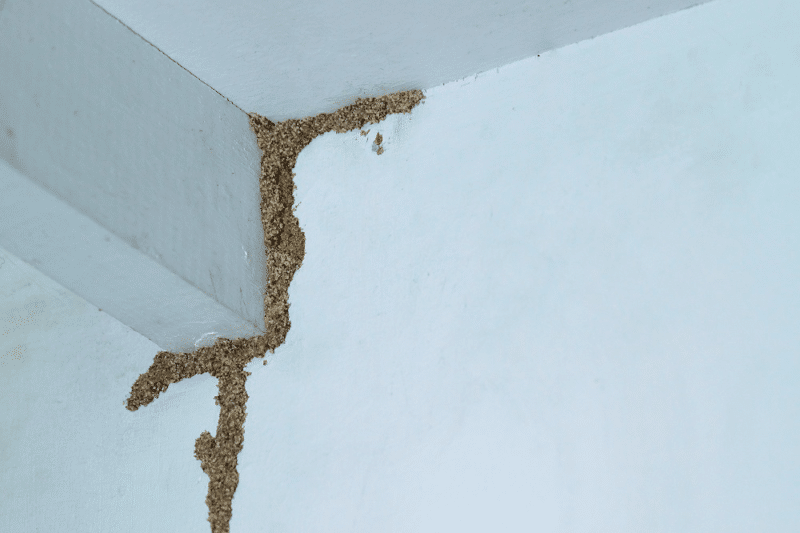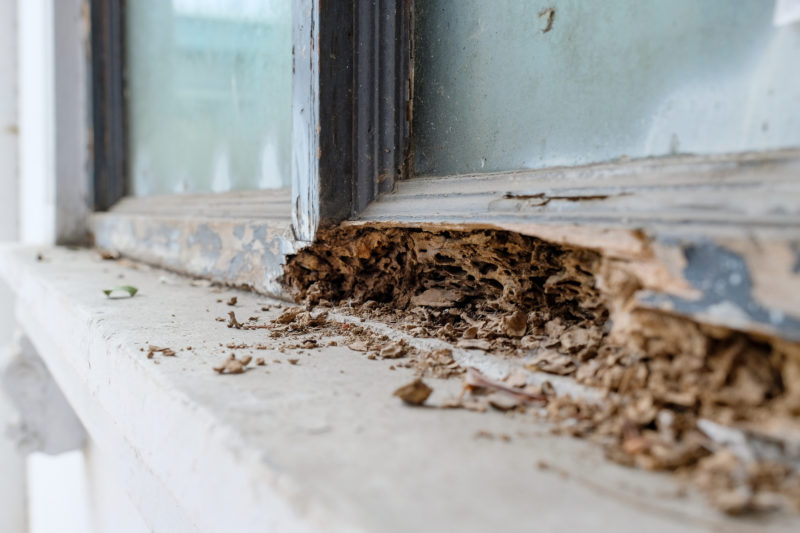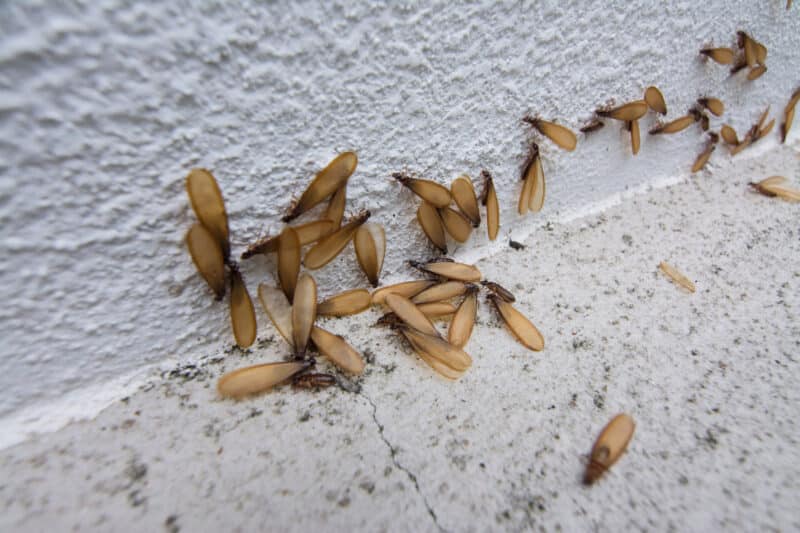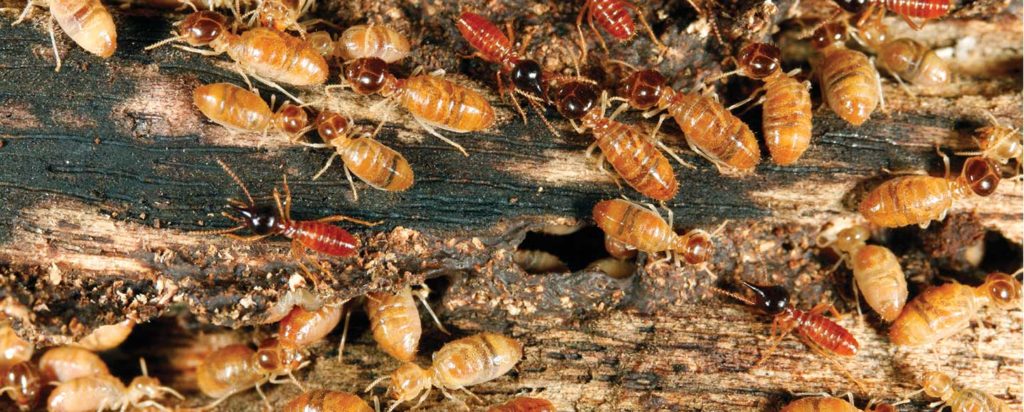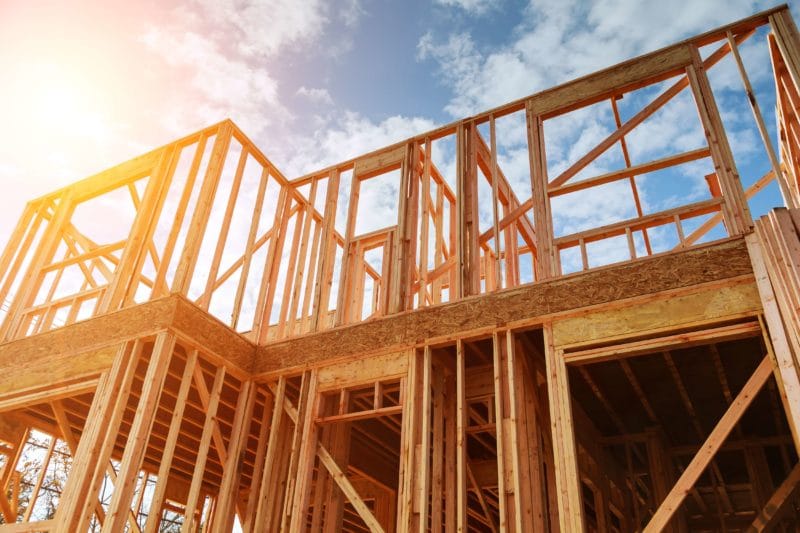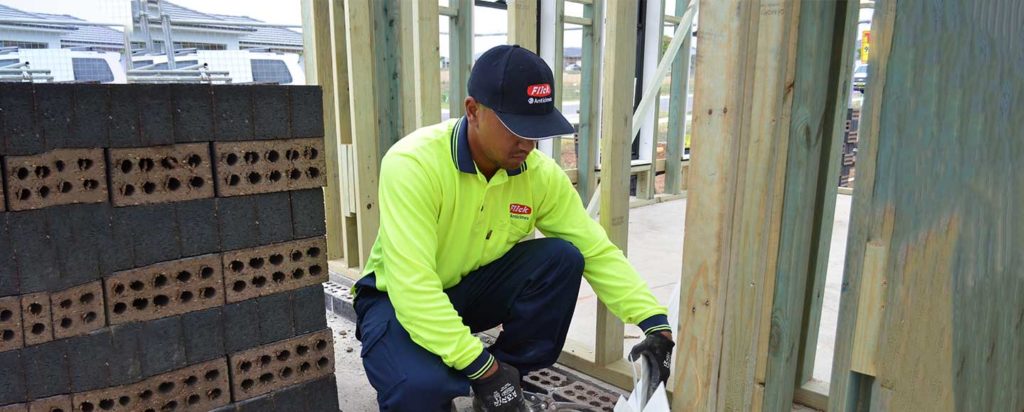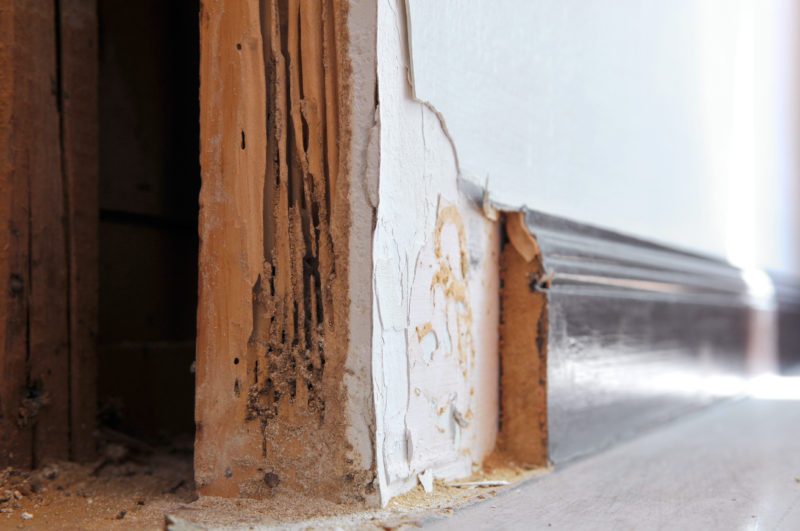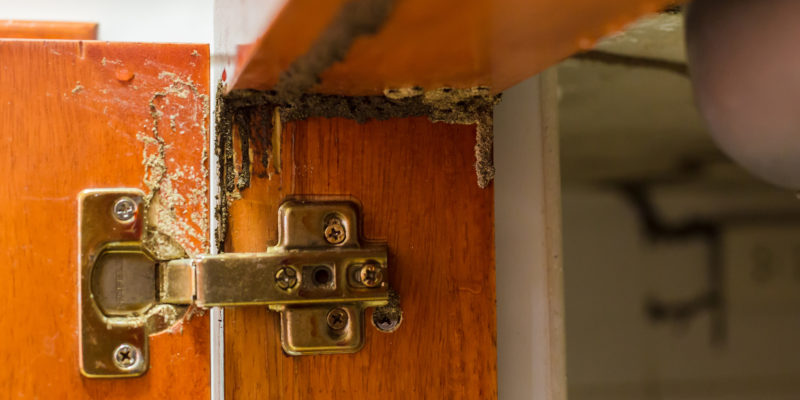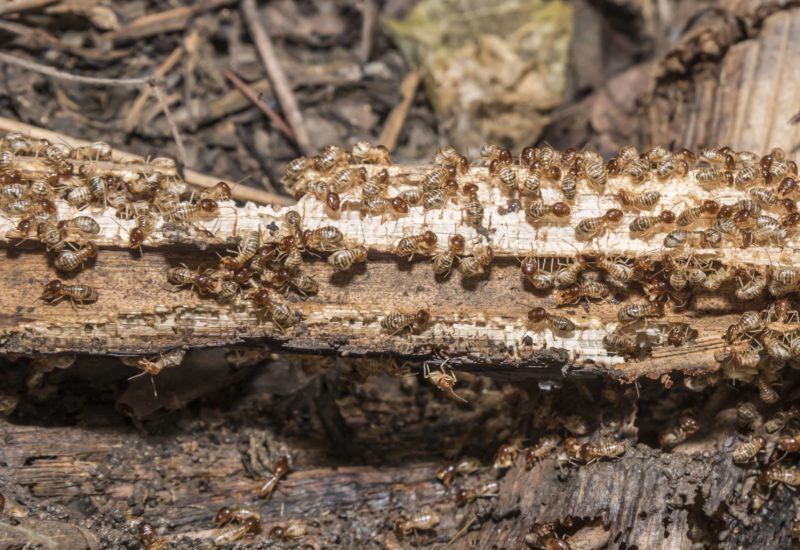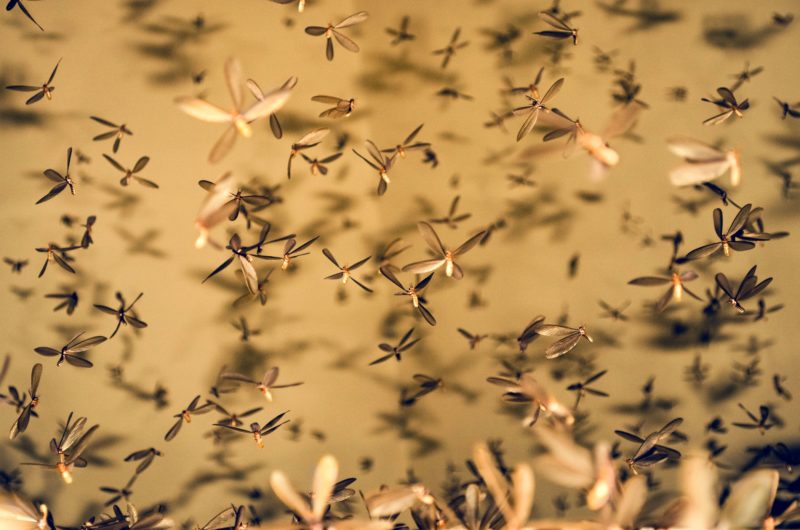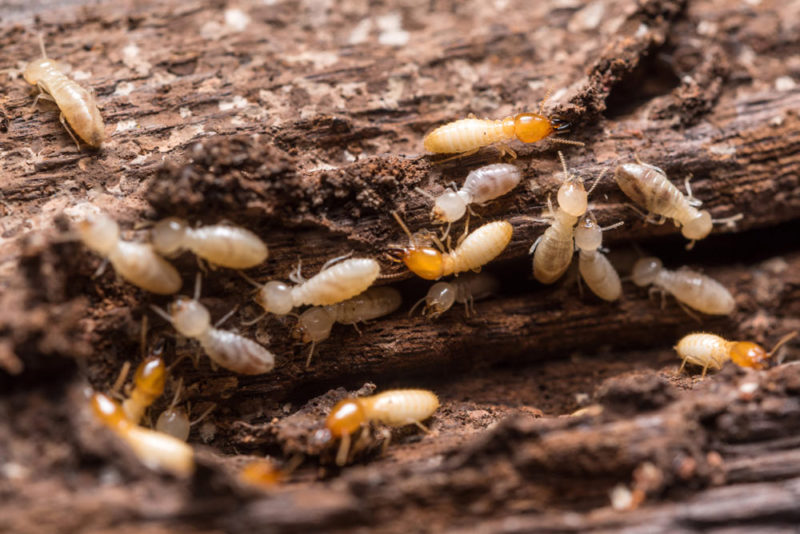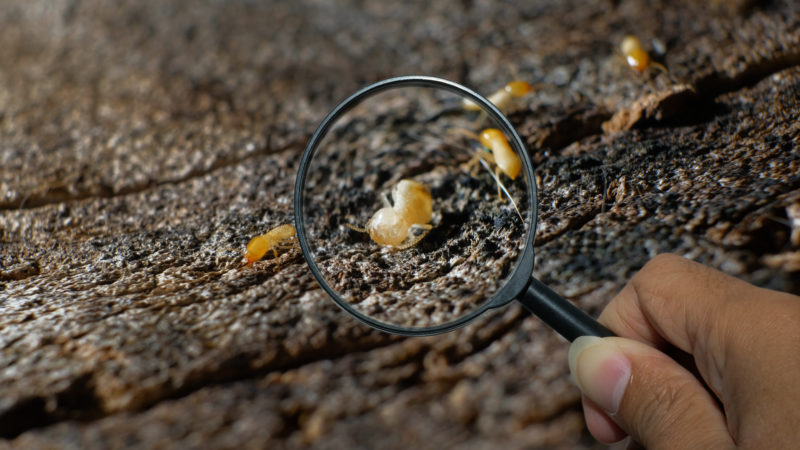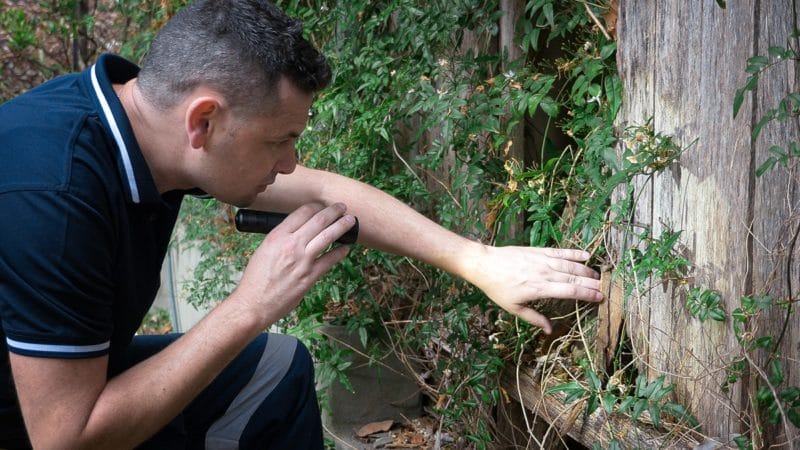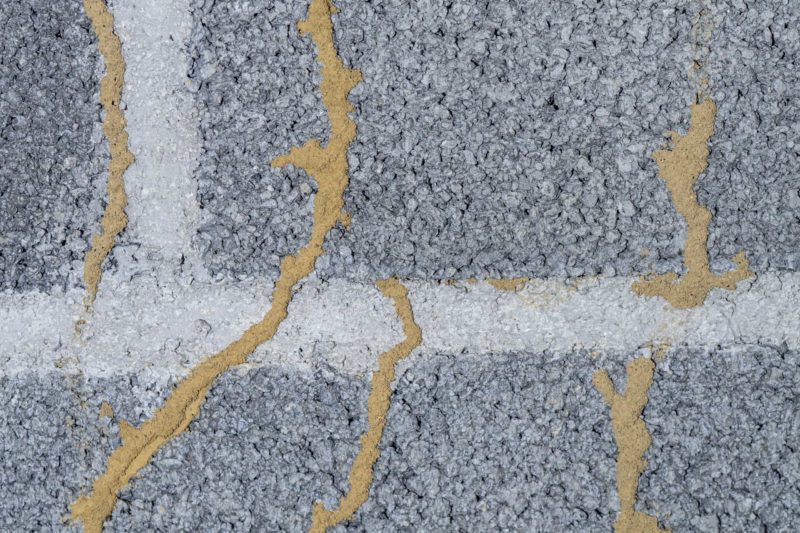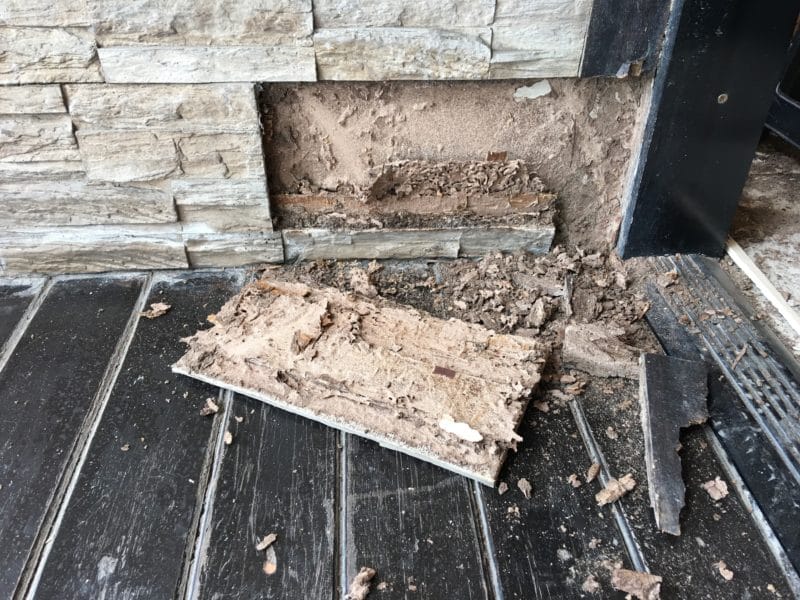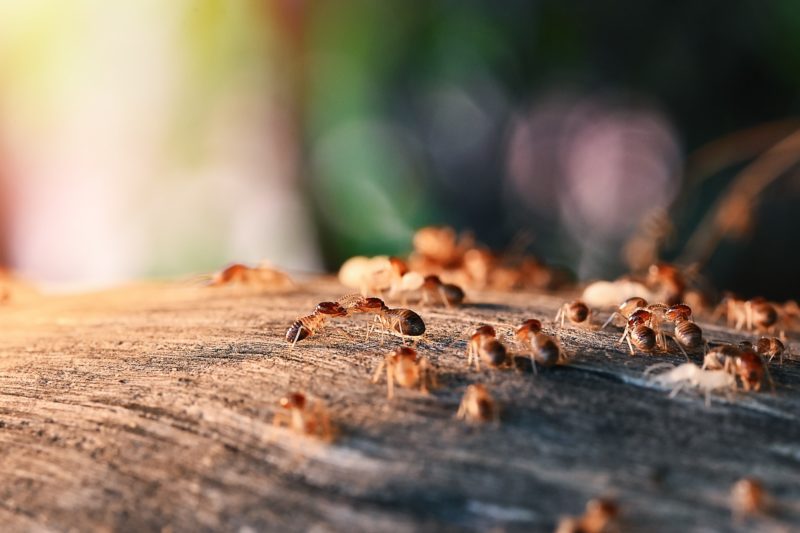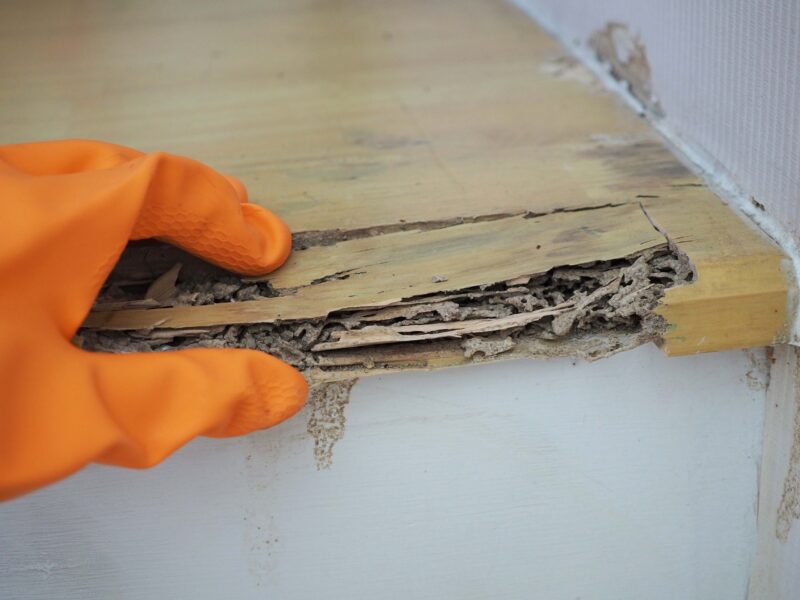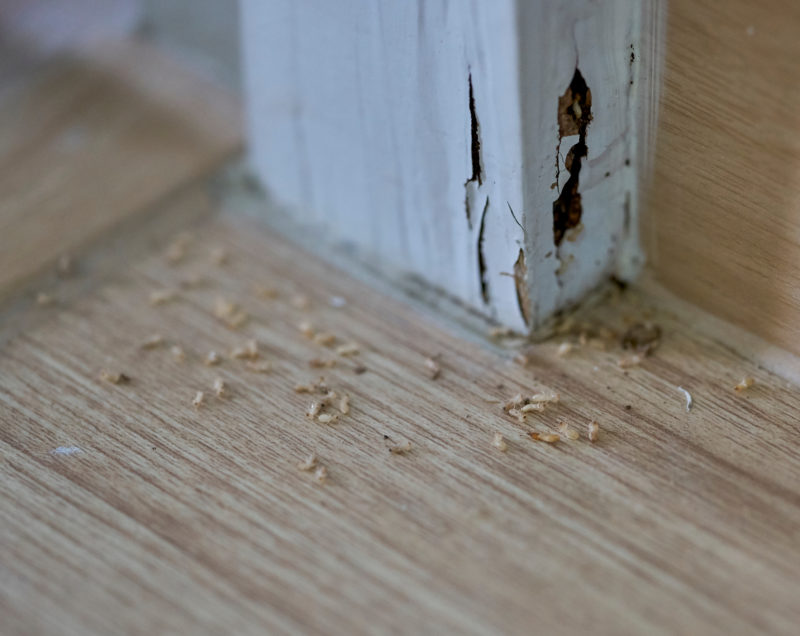Termites
Termites are a menace to homeowners everywhere without proper termite treatments. Often referred to as white ants, these wood-devouring insects also eat any materials which contain cellulose, like cardboard and paper. Termites are closely related to cockroaches on the evolutionary scale and are active 24/7, 365 days per year. Every year, termites cause hundreds of millions worth of damage to Australian homes. Termite surveys find that 1 in 3 properties in Australia will be affected by termites at some stage, which causes greater damage than fires, storms, and floods combined. Many Australians will also find that termite damage is not covered by most home insurance policies, leaving many with damaged homes and no help. Conducting frequent termite inspections is paramount to detecting problems early and figuring out treatments. Find out more when you download our Termite Fact Sheet!
Our Home Protection plans cover timber pest inspections and termite warranty inspections – Learn More
Flick Home Protection makes protecting your family and home from pests easier than ever. Our effective and affordable pest control plans include an exclusive 12-month warranty. Timber Pest Inspection or Termite Warranty Inspection are included in our Gold, Silver and Bronze Termite Home Protection Plan. Find out more here.
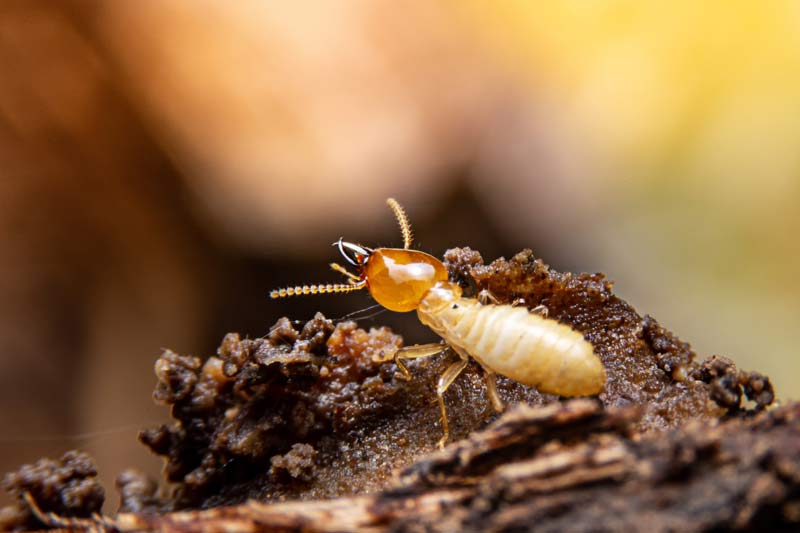
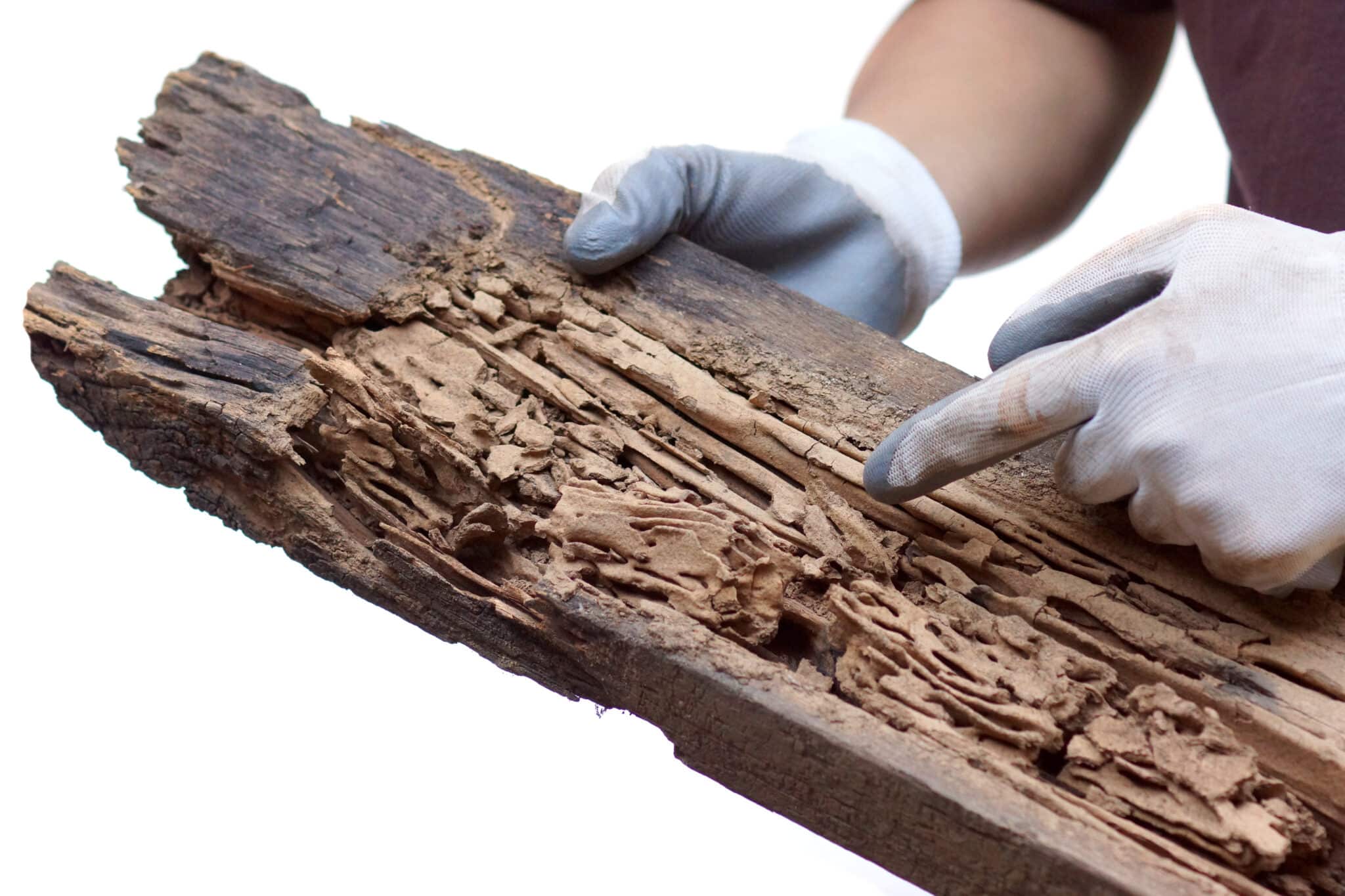
How to Identify Termites
Termites are notorious for their destructive feeding habits, and it’s crucial to be aware of the signs of termite infestation in order to promptly address the problem. Look out for specific indicators such as timber walls sounding hollow when tapped, sagging doors and floors, and cracked plaster and paint. Other signs may include the presence of discarded wings, mud tubes on exterior walls, or piles of termite droppings, also known as frass.
Knowing how to identify these signs is important because termite infestations can cause extensive damage to a property if left untreated. By being vigilant and catching the signs early, you can prevent costly repairs and structural damage to your home.
If you suspect a termite infestation, it is imperative to seek professional assistance immediately. Termites work quickly, and waiting to address the problem can lead to further damage. Here at Flick Pest Control, we have the expertise and tools to eliminate termites and prevent future infestations effectively.

Preventative Measures for Termites
Preventative measures for termites are crucial to protect your home and property from potential termite attacks. One important measure is to have a termite barrier in place to prevent termites from entering your home. This can include physical barriers, such as metal screens or chemical barriers, such as liquid termiticides applied around the perimeter of the home. Flick offers multiple termite barrier options to manage your property, such as Termguard, Flickguard, and Granitgard. Depending on the structure of your building, our termite specialists will recommend one of the many termite building solutions or a combination of them.
In addition, annual termite inspections by our qualified pest control technicians are essential to detect any early signs of termite activity and to take proactive measures to prevent infestations.
By implementing these preventative measures, you can significantly reduce the risk of termite infestations and protect your home and property from costly damage.
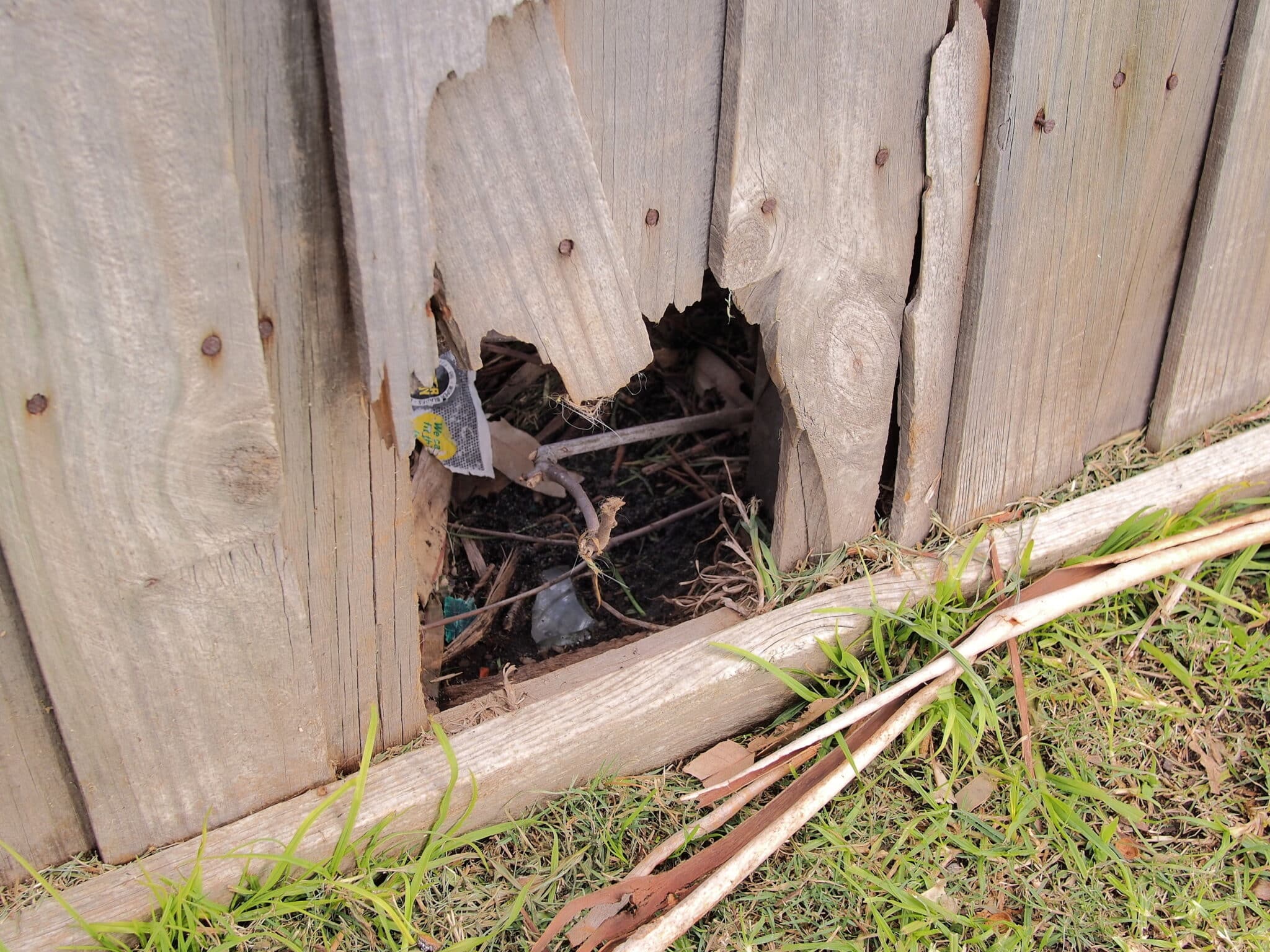
How Termites Are Treated
Flick Pest Control is a trusted name in termite treatments and will perform a full site analysis to determine the best treatment option for you. Treatment options include the Flixterm Termite Interception and Baiting System, which is an environmentally friendly termite solution that monitors, intercepts and eliminates termites. A termite baiting system may take around four hours to install, then regular visits are required over subsequent months for monitoring.
Alongside our termite baiting system, Chemical Termite Soil Treatments will be implemented if there is termite access underneath your home. A soil-treated zone may take around a day to install and can be active for up to eight years.
If we find that there are live termites in your home, we will perform Termite Dusting directly where termites are feeding on timber. Elimination of the attacking colony using termite dust can take several visits over 8-10 weeks.
Flick Pest Control has numerous customised solutions available to protect and treat your property from termite infestations. Contact us today to determine which treatment option is best for your property.
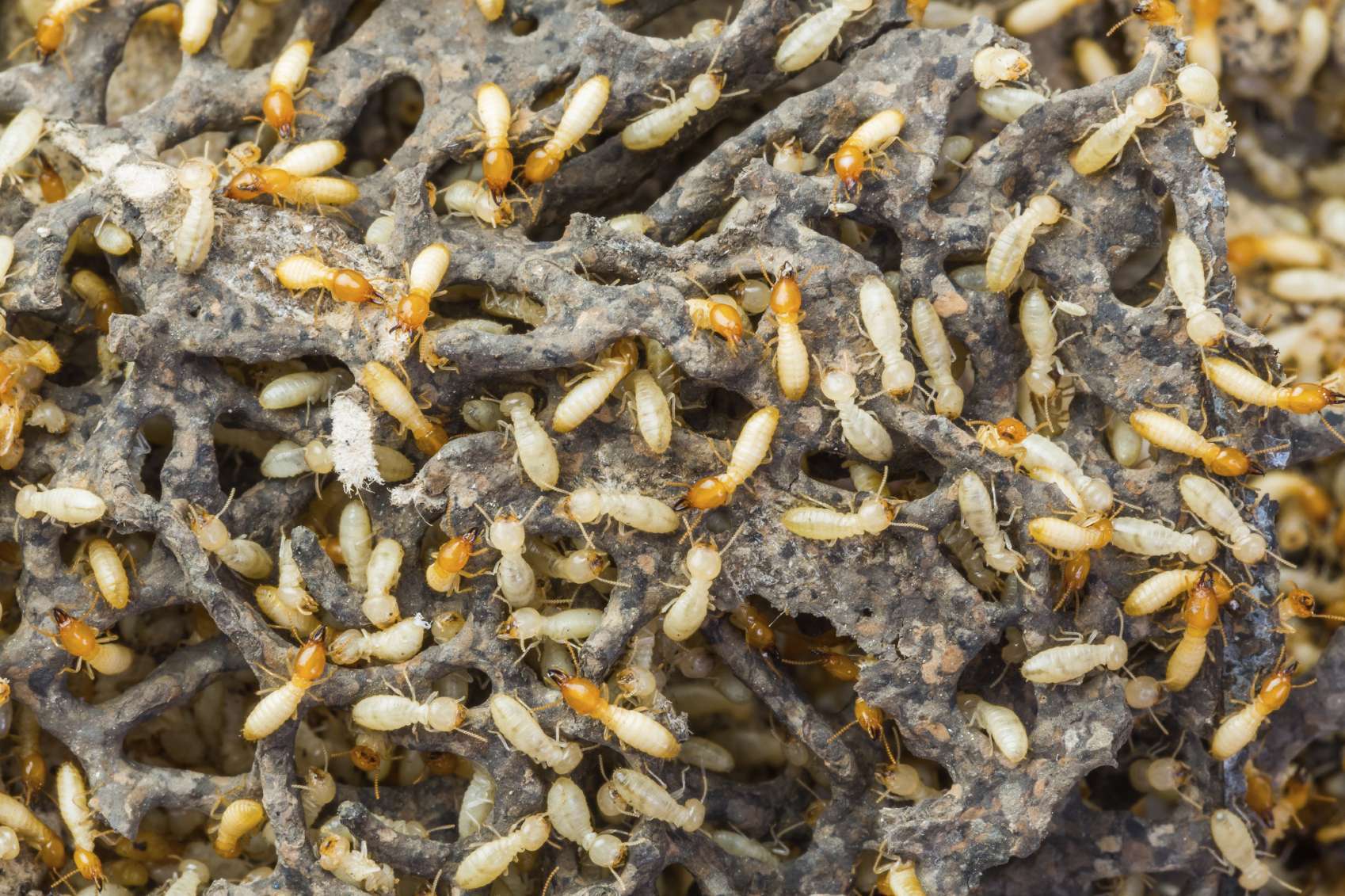
Climate Change and Termite Activity
Recent studies have highlighted a significant correlation between climate change and increased termite activity in Australia. As global temperatures rise, termites are expanding their habitats and consuming wood at accelerated rates. For instance, termites have been observed to consume wood seven times faster in regions with temperatures around 30°C compared to those at 20°C. This heightened activity not only poses a greater threat to structures but also contributes to increased carbon emissions, as termites release methane—a potent greenhouse gas—during digestion.
Shield Your Family & Home Year Round from Termites
Flick's Home Protection Plans
Flick's Home Protection Plans provide effective and affordable protection for your home and family from a wide range of pests. Our Gold, Silver and Bronze Termite plans include preventive measures to stop termites from entering your home in the first place, as well as reactive and emergency termite pest control services if needed. All plans come with a 12-month warranty* and easy monthly payments. With a variety of plans to choose from, you can find a plan that meets your specific needs and budget. Contact your local Flick branch to see if Home Protection is available in your area and begin shielding your family from termites today!
Commercial Pest Solutions
Integrated Termite Solutions
It is essential for businesses to prioritise the health and safety of their employees and customers. Termites not only pose a health risk but also damage property and reputation. Flick’s professional commercial pest control services provide tailored solutions to prevent and eliminate any pest infestations, ensuring a clean and hygienic environment for everyone. Our regular inspections and treatments help to maintain a pest-free workplace and protect your business from potential pest related damage. Trusting in Flick’s commercial pest control solutions is a smart investment in the long-term success and reputation of any business.
Common Termite Questions
How big are termite colonies?
Termites are social insects, living together in colonies. The colonies of subterranean termites can contain up to several million termites. They are divided into castes which determine their activities. Termites in the worker caste dig tunnels and ensure food supply. Soldiers prevent intruders from harming the colony, while reproductive termites perpetuate the species by ‘swarming’ annually to start a new colony. Termites are active 24/7, 365 days a year.
Are termites and white ants the same thing?
White ant is the common name for termites of which there are many species. While termite is the correct term, they are often called white ants due to their appearance. They resemble ants and are a milky white colour. However, termites have little in common with ants from an evolutionary perspective and are more closely related to cockroaches
What do termites like to eat?
Termites eat wood and the cellulose that is found in paper and timber-based products. The timber is often eaten from the inside, leaving a paper-thin shell on the outside that appears mottled or wrinkled and often stained with spots of mud. On residential properties, termites may infest finished timbers such as door frames, skirting boards and architraves, subfloor timbers and framing.
How can Flick help with your termite problem?
If you suspect a termite problem, it is imperative that you have a timber pest inspection done by an accredited professional, who should provide you with a comprehensive written report and a proposal for eradication and future control. All Flick Anticimex timber pest inspections are carried out in accordance with Australian Standards. Suspect a problem? If you find termites DO NOT disturb them and call us on 1300 270 019.
How long is a termite treatment active?
Once you have a termite treatment done on your home, it is usually active for several years, depending on the specific method and formulations applied. Another variable is the residual life of the formulation in the soil, which varies according to the amount of moisture present and the type of soil substrate. However, you should have inspections performed at least once a year.
Common Termite Species
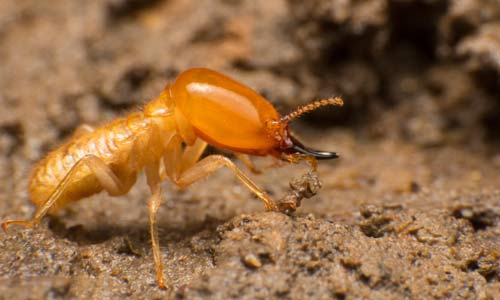
Subterranean Termites
Apppearance
Worker and solider subterranean termites are 1/8 – 3/8th inch long. Workers are cream-coloured, soldiers have brown heads and powerful mandibles. Larger, reproductive subterranean termites are about an inch long and look like winged ants.
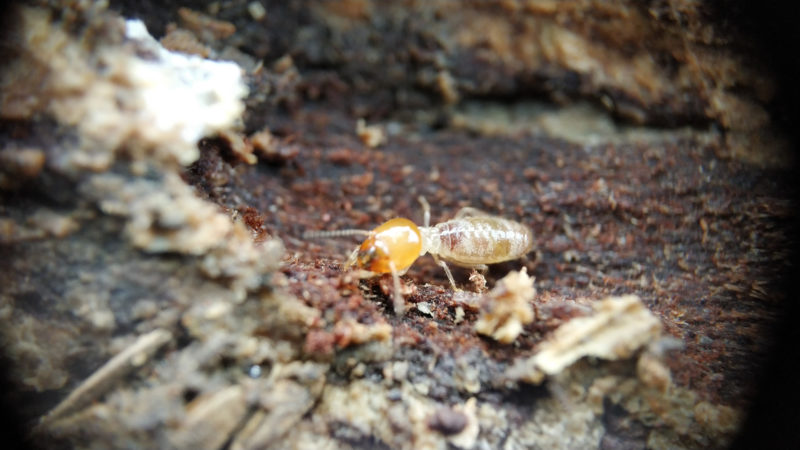
Drywood Termites
Apppearance
Drywood termites are similar in appearance to subterranean termites and vary in colour according to their maturity and role. Worker termites are cream, soldiers and swarmers can be brown or black.
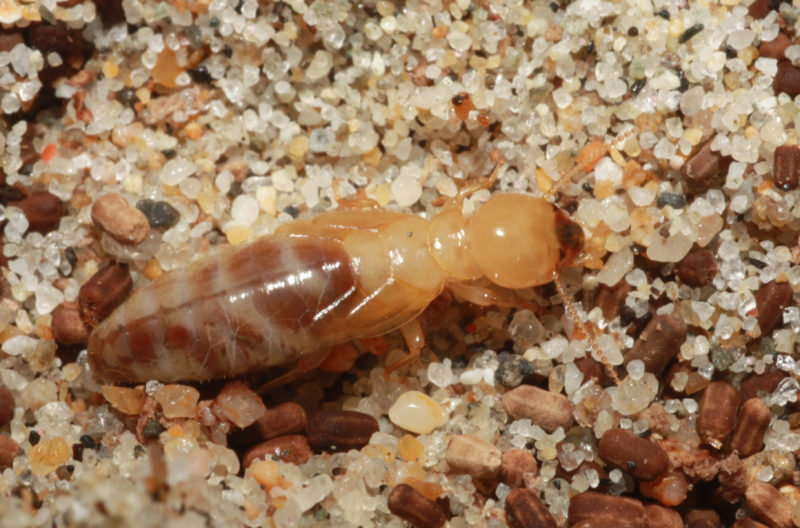
Dampwood Termites
Apppearance
Dampwood termites are much larger than subterranean termites and look like winged ants. Large head with pincers on the front.
I found Termites! Help!
Don't worry, we're here to help. Follow these steps to stay safe until help arrives!
Call a Professional
Call Flick Pest Control Immediately.
If you encounter termites in your home or business, you may be dealing with an infestation. Don’t wait until the problem gets out of hand – we can help protect your property and ensure the health and safety of those around you. Fill out the form below or call 1300 270 019 today.
Leave the Termites Alone
Trust Flick Pest Control to handle the situation
Our pest control technicians have the knowledge, experience, and tools necessary to effectively and safely eliminate pests from your home or business. Attempting to treat termites on your own can be risky and may not fully eradicate the problem.
We will and ensure a safe and effective outcome for your property.
There May be More!
Don’t Go Looking Around!
Flick’s pest control experts will perform a thorough inspection of the property to identify any areas where termites may be present, followed by the development of a treatment plan tailored to the specific needs of the situation. By implementing effective pest control strategies, we can help ensure a pest-free environment for you.





